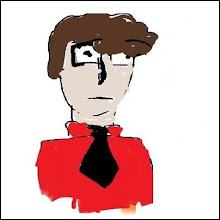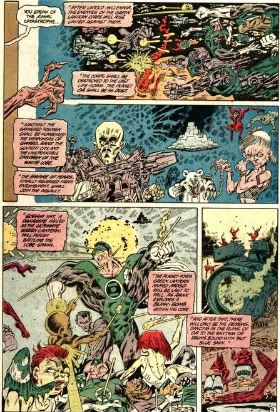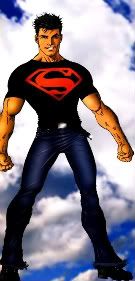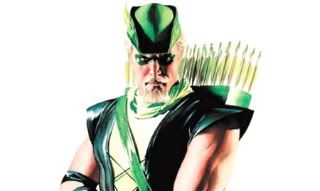
Martian Manhunter
Who he is: A standard of the Justice League for many many years. Never really successfully carried his own series, so that sort of puts him on the top of the B list.
How he died: In the first issue of Final Crisis, Libra, a harbinger of Darkseid stabs Martian Manhunter to death. A funeral is held and everyone is very sad. :(
How long has he been dead: About a year and counting.
Chances of coming back to life: Medium. He was never really all that popular as a stand alone character, and as far as I'm aware there's no cry for him to come back. That said, as a member of Justice League, he should not be counted out completely.

Batman
Who he is: Probably the most popular comic book character, second only to Superman in terms being instantly recognizable.
How he died: Also during Final Crisis, Darkseid shot him with the "Omega Sanction", the death that is life. His body is fried to a crisp and he is buried in the ground. In the last issue of Final Crisis we see him stranded in the past, back in caveman days. This is due to the nature of the Omega Sanction, which traps someone in an endless cycle of death and rebirth, with each life being worse than the last. Basically, a Hell tailored to each individual person that Darkseid shoots out of his eyes. Mr. Miracle escaped from it before, and now it's Batman's turn.
Time spent dead: About a year and counting
Probability of coming back: Certain. Grant Morrison says he was never meant to "die", just be out of the picture for a while as part of an overall story line.

Various people's families and girlfriends
This groups contains the parents of Tim Drake, Hal Jordan, Batman, Captain Marvel, The Question, Dick Grayson, and Superman. Also included are Superman's adopted father, Kyle Rayner's parents and various girl friends, as well Spiderman's Uncle Ben. Those are the big ones, there are others too numerous to mention.
How they usually die: One of two ways. Either as part of the character's origin, in which we never really see them alive. Or, a villain kills them, and in the case of Kyle Rayner's girlfriend Alex, stuffs them in an appliance.
Possibility of coming back: Nil. As characters either created as corpses or killed to provoke an emotional response, their purpose has been served.

The Question
Who he is: An Objectivist superhero created by Steve Ditko. He then got turned into a vaguely Zen inspired introspective fellow by Dennis O'Neil, and then into an urban shaman by Rick Veitch.
How he died: Of cancer. After hand picking and training his replacement, Question expired from lung cancer on the side of a snowy mountain. His last words: "Time to change...like a butterfly..."
Time spent dead: About three years so far.
Possibility of coming back: Low. Rucka, the writer that killed him off, is currently writing his replacement. It was a well written death and his new replacement is a good character. Furthermore, he never really hit the A-list to begin with, so there's no massive outcry for him to come back.
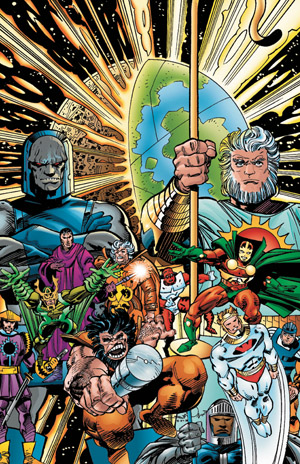
The New Gods
Who are they: Jack Kirby created an entire mythology of Superheroes/Gods that lived in a separate dimension (called the Fourth World) in the DCU. The good Gods of New Genesis battle endlessly against Darkseid, the God of Evil.
How they died: During DC's Countdown series, a spin-off called (appropriately) Death of the New Gods killed them all off. Their creator, the Source, found them to be a failed creation and destroyed them all, in preparation for creating a Fifth World.
The continuity got a bit messy. In Countdown, the planet Apokolips is last seen taken over by Brother Eye and the OMACs. There is no mention of this in the Death of the New Gods series, which was published concurrently. At the end of Death of the New Gods, all of them are dead except Darkseid and Orion, and the story then segue ways into the last few issues of Countdown. Orion rips out Darkseid's heart, and then walks off, severely injured, as the last surviving New God.
Immediately following Countdown starts Final Crisis. We find Orion dead in the first issue, but Darkseid's soul has possessed an avatar of his that lives on Earth, Boss Darkside, whom we saw in Grant Morrison's Seven Soldiers of Victory. He then, somehow, summons the spirits of his various sidekicks, who all possess Earth inhabitants as well. Darkseid takes over the Earth and defeats goodness, erases free will and just generally makes a mess of things.
In the end, even the God of Evil can't stand against a pissed of Superman and Batman's infinite supply of bad ass. First, Batman shoots him with a bullet that can kill Gods. His body is poisoned. Then both Flashes cause Darkseid to get struck by the Black Racer, a sort of Grim Reaper character. This separates his soul from his body. Wonder Woman lassos his body, breaking the hold he had established over the people of Earth. Last, but not least, Superman completely obliterates his soul by...(wait for it)..singing. ("Darkseid always hated music," Superman quips.)
Possibility of coming back: Certain. It's just a matter of time before someone gets around to it. Grant Morrison seems a likely candidate, but it probably won't happen until, at the very last, DC's current big event Blackest Night finishes up. I would like to thank they'll leave Darkseid dead considering how utterly destroyed he ended up getting, but I guess we'll see.
